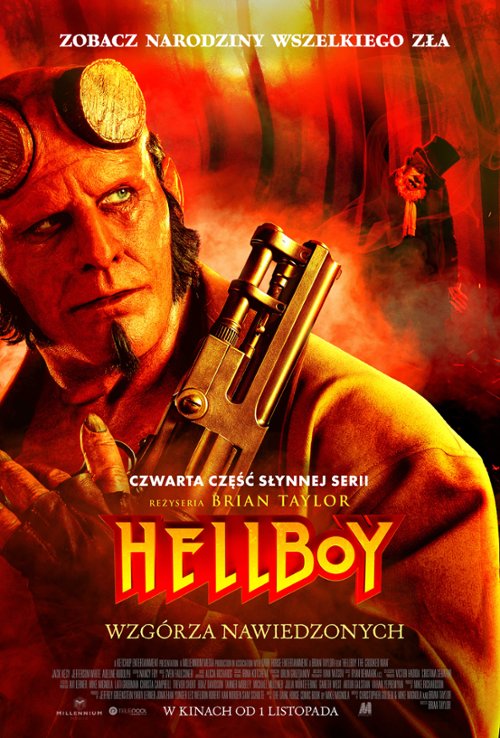“There lived in the Appalachians a guy, quite voracious”, one could say, paraphrasing the words of Roman Kostrzewski from the band Kat, a lamented occult eulogist from Bytom and Miciński’s apologist. Like the visitor from the quoted song, the sinister Moneylender from “Hellboy: Haunted Hills” promised paradise to those who would surrender their souls to him. However, on the screen, humanity is watched over by the devil from the depths of hell, Hellboy – the final proof that upbringing is more important than genes. Born out of a pure need to do evil, to enslave the world under the sign of the swastika, he nevertheless grew to become its savior. Hence the tragic conflict of this character, his inherent fear of his own self, the awareness of the ticking bomb in his heart, the split between his hellish nature and the moral compass that constantly and firmly points to good.
But Brian Taylor’s film spares us both the story of Hellboy’s birth (fortunately), his personal dilemmas (unfortunately), and, well, the production quality we are accustomed to. The production of “Hellboy: Haunted Hills” is closer to a fan project shot for pennies in local forests than to a professional adaptation of a unique comic book – even if the creators (ineptly) try to disguise it. Because it must be admitted that the cinematographer goes to great lengths to hide the low budget and scenographic shortcomings by using a cold filter, a fish eye or tricks with image sharpness. Minimalist and rare digital effects, however, are clearly not – as they are trying to convince us – a conscious artistic decision dictated by the desire to return to the analog era, but the result of lack of money. In fact, Jack Kesy looks like Hellboy from a discount store in the title role; it has neither the charisma of Ron Perlman nor the pretentious arrogance of David Harbor.
The plot, derived from Mike Mignola‘s comic book, breaks with the spectacular intrigues known from previous film adaptations of the Hellboy series. There, people invariably talked about threats on a planet-wide scale. Here we are dealing with one of hundreds of supernatural-criminal cases that have been solved by the cheerless devil next door over the decades. A train transporting a dangerous spider across the Appalachian Mountains crashes in the middle of nowhere. Traveling in it are: the monster, Hellboy, and his yet unfeathered colleague from the Bureau of Paranormal Research and Defense, Bobbie Jo Song (Adeline Rudolph). We are in the 1950s and in an area where civilization has not yet reached – you have to look for a landline phone quickly. However, it quickly turns out that the three huts standing among the mountains have been invaded by a certain Moneylender, a demonic creature who hunts the souls of those whose lives are not going well.
Hellboy, of course, knows one solution: shooting and beating with a large gun is a real exorcism for him; this is how it channels its hellish energy, getting rid of everything that threatens people from the surface of the Earth. But here he usually talks, whines and smokes. Taylor has trouble arranging even one interesting scene, as if he was sewing from nothing and had no creative idea for adapting the intriguing text (or drawings) by Mignola, full of darkness and mystery. Initially, it was supposed to be an attempt to return to the roots and present a small-scale issue, which is praised at the conceptual level. But the execution is poor: the road to hell could actually be paved with the creators’ good intentions. Taylor wanted to trade the action for horror, but he doesn’t succeed in grading the tension, as he usually enhances it with an intrusive musical commentary that interprets the events with a penitentiary exaltation. It quickly turns out that a not-so-bad beginning is the only thing “Hellboy: Haunted Heights” has to offer. This is a film of questionable quality – and one that does not give any fun.
It is possible that the failure – artistic and commercial – of Taylor’s film will ruin ideas for further film adaptations of “Hellboy” for a long time. However, this does not necessarily have to be undesirable and tragic information. Contrary. It’s possible that Mignola’s comics simply don’t translate easily to the screen and should just remain what they are. It will save us time.

